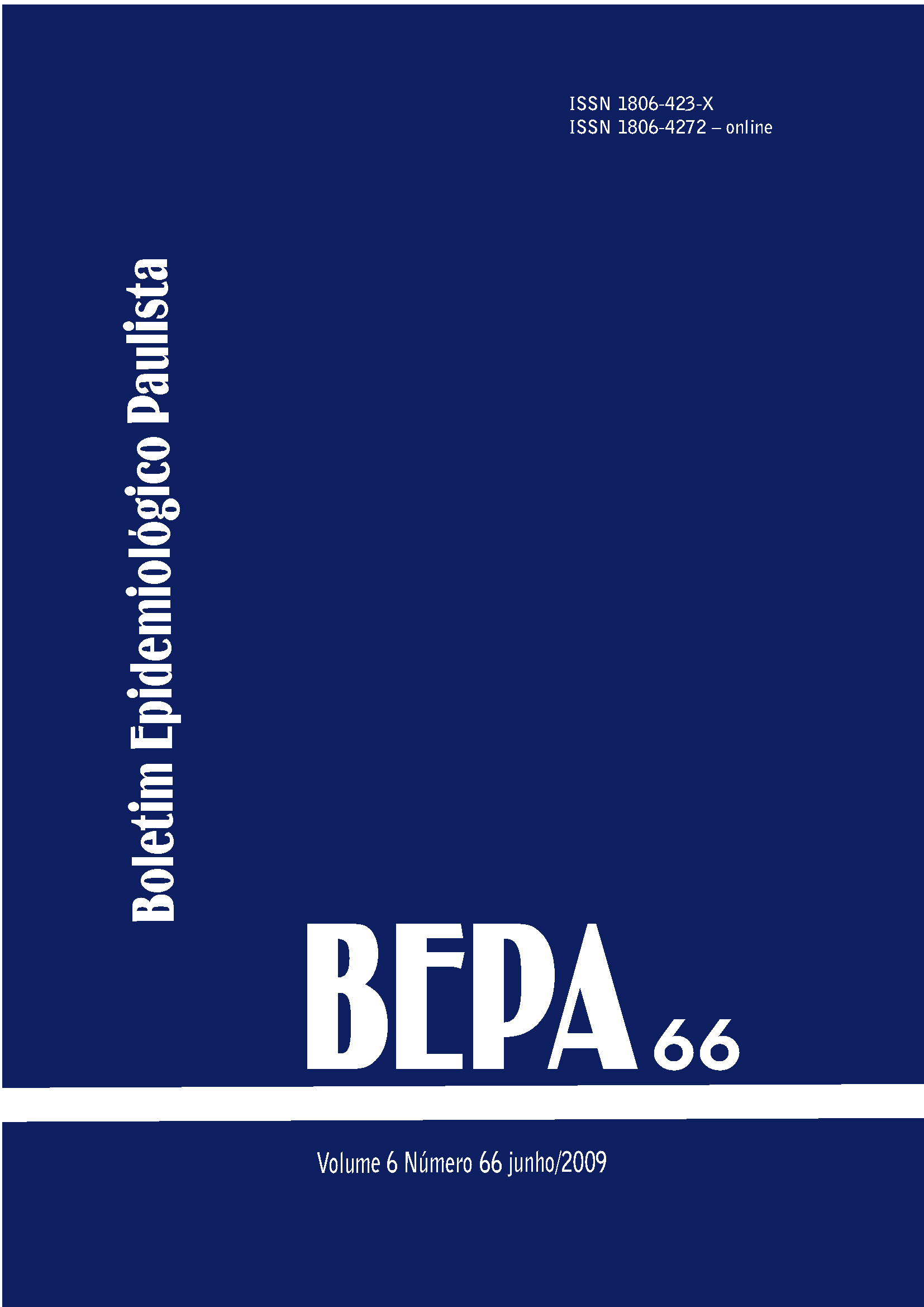Resumen
O monitoramento das doenças crônicas não transmissíveis deve ser componente essencial do planejamento, implantação e avaliação de medidas para o seu controle e prevenção. Desse modo, esse estudo tem por objetivo apresentar a tendência e o perfil da mortalidade por doenças crônicas não transmissíveis no Estado de São Paulo, com ênfase em alguns grupos de doenças selecionadas. Os dados analisados são provenientes do Sistema de Informações de Mortalidade do Datasus/Ministério da Saúde. Os resultados mostraram que as doenças do aparelho circulatório e neoplasias foram responsáveis por 47,5% do total de óbitos ocorridos no Estado, em 2006. Entre as doenças do aparelho circulatório, as doenças isquêmicas do coração e as cerebrovasculares foram as principais causas de morte. O risco de um indivíduo do sexo masculino, residente em São Paulo, morrer por uma doença isquêmica do coração é 1,4 vez o risco de uma pessoa do sexo feminino; por doença cerebrovascular é 1,1 e por neoplasias malignas, 1,2. As taxas de mortalidade ajustadas por idade das doenças isquêmicas do coração, para o triênio 2004-2006, mostraram grande variação entre os diferentes Departamentos Regionais de Saúde (DRS): a Grande São Paulo apresentou taxa 2,5 vezes do que a encontrada na região de Araçatuba. Esses achados fornecem subsídios para a implantação e avaliação de programas e atividades com vistas ao controle e prevenção desses agravos.
Citas
World Health Organization - OMS. Action plan for the global strategy for the prevention and control of non communicable diseases. 2008- 2013. Organização Mundial da Saúde, 2008.
Secretaria de Vigilância em Saúde. Secretaria de Atenção à Saúde. Política nacional de promoção da saúde. Brasília: Ministério da Saúde, 2006.
Lessa I. Doenças crônicas não-transmissíveis no Brasil: um desafio para a complexa tarefa da vigilância. Ciênc Saúde Coletiva. Dez 2004; 9(4):p.931-43. ISSN 1413-8123.
Achutti A, Azambuja MIR. Doenças crônicas não-transmissíveis no Brasil: repercussões do modelo de atenção à saúde sobre a seguridade social. Ciênc saúde coletiva. Dez 2004;9(4):833-40. ISSN 1413-812.
Secretaria de Vigilância em Saúde. Secretaria de Atenção Básica. A vigilância e o controle e a prevenção das doenças crônicas não transmissíveis. DCNT no contexto do Sistema Único de Saúde brasileiro/Brasil. Brasília: Ministério da Saúde. Organização Pan- Americana da Saúde, 2005.
Ministério da Saúde/Datasus [base de dados na internet]. Disponível em: www.datasus.gov.br. Acesso em 24 abril 2009.
Biblioteca Virtual em Saúde [base de dados na internet]. Características dos indicadores. Fichas de qualificação [acesso em 7 maio 2009]. Disponível em: http://www.ripsa.org.br/fichasIDB/ record.php?lang=pt&node=A.10.
World Health Organization - WHO. Preventing chronic diseases a vital investments. Geneva: WHO, 2005. v. 1. p. 182.
Secretaria de Vigilância em Saúde. Secretaria de Gestão Estratégica e Participativa. Vigitel Brasil 2008: vigilância de fatores de risco e proteção para doenças crônicas por inquérito. Brasília: Ministério da Saúde, 2009.
World Health Organization. Diet, nutrition and prevention of chronic diseases. Geneva; WHO; 2003. (Technical Report Series, 916).
World Health Organization - WHO. Obesity: preventing and managing the global epidemy. Geneva: WHO; 1997. (Report of WHO consultation on obesity).
Barreto SM, Pinheiro ARO, Sichieri R, Monteiro CA, Batista Filho, M, Shimidt M, et al. Análise da estratégia global para alimentação, atividade física e saúde da Organização Mundial da Saúde. Epidemiologia e Serviços de Saúde. 2005;14(1):41-68.

Esta obra está bajo una licencia internacional Creative Commons Atribución 4.0.
Derechos de autor 2009 Vilma Pinheiro Gawryszewski, África Isabel de La Cruz Perez Neumann, Ricardo de Castro Cintra Sesso, Míriam Matsura Shirassu, Sérgio San Fins Rodrigues, Adriana Bouças Ribeiro, Luiz Francisco Marcopito
